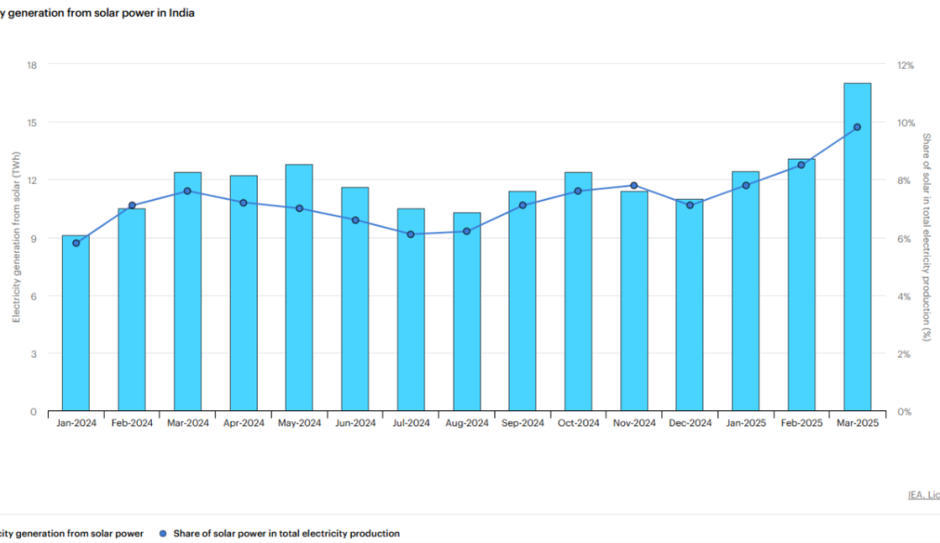Electricity generation in OECD countries continued its upward trajectory in March 2025, with total output rising 3.1 percent year-on-year to 908.7 TWh. A significant portion of this growth came from renewable energy, underscoring the global pivot toward cleaner power sources despite occasional upticks in fossil fuel use, IEA said.
Renewable Energy Expansion
Renewable sources accounted for 39.5 percent (358.7 TWh) of OECD electricity generation, up 4.5 percent year-on-year (+15.6 TWh). This rise was primarily fueled by a surge in solar energy, which saw an impressive 28.8 percent increase (+18.9 TWh).
Wind power also grew by 3.1 percent (+3.5 TWh), reinforcing the role of variable renewables in the transition. However, hydropower generation declined by 6.6 percent (-8.8 TWh), especially in OECD Europe, where reduced rainfall impacted output in countries like France, Italy, Switzerland, and Turkiye.
Fossil Fuels: Short-Term Uptick, Long-Term Uncertainty
Despite growing clean energy contributions, fossil fuels still represented 43.2 percent of total OECD generation. Coal made a notable comeback in March, rising 8.7 percent year-on-year (+10.7 TWh), particularly in the U.S. and Germany. Natural gas, however, declined 2.6 percent (-6.4 TWh), suggesting some substitution dynamics or lower demand amid rising renewables.
Nuclear Power Remains Stable and Growing
Nuclear power contributed 16.9 percent of OECD electricity, with output growing 4.8 percent year-on-year (+7.0 TWh). Growth was led by OECD Europe and Asia Oceania, which saw notable increases of 7.1 percent and 15.3 percent, respectively, signaling efforts to stabilize baseload capacity alongside intermittent renewables.

India’s Renewables Momentum
Outside the OECD, India emerged as a renewable energy hotspot. In March 2025:
Solar generation soared by 37.5 percent (+4.7 TWh), reaching 9.8 percent of the country’s electricity mix.
Hydropower grew 25.4 percent, while wind and nuclear grew by 12.1 percent and 17.4 percent, respectively.
Notably, combustible renewables declined 12.6 percent, highlighting a shift toward more scalable and lower-emission sources.
The March 2025 data from the IEA underscores a growing reliance on renewable electricity, especially solar and wind, across both OECD and emerging markets. While fossil fuels — especially coal — remain a significant part of the energy mix, their long-term viability faces pressure from cleaner, increasingly competitive alternatives. The continued momentum in clean energy investments, supported by policy and technology improvements, signals a steady transition toward a more sustainable global power system.
GreentechLead.com News Desk

